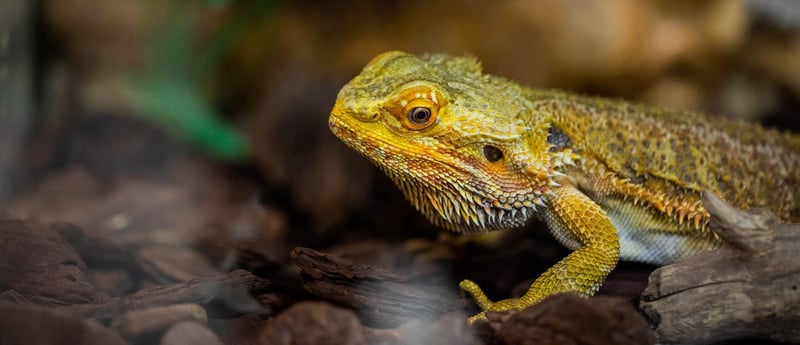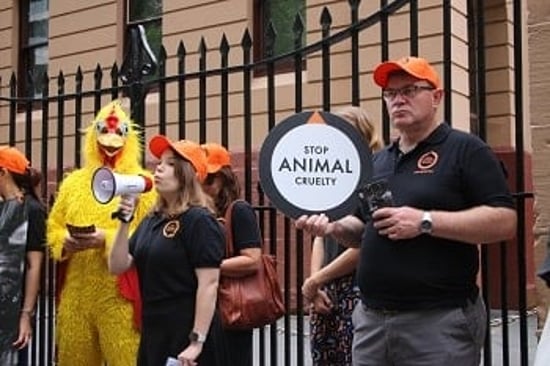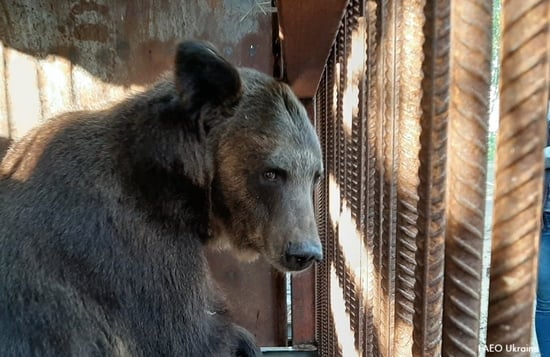
Four reasons bearded dragons don't make good pets
News
Like all reptiles, bearded dragons belong in the wild, not in a tank in your home. Here's four reasons why they don't make good pets.
Image: World Animal Protection / Noelly Castro
Though the bearded dragon’s natural habitat is in the warm, arid deserts and scrublands of Australia, thousands are captively bred and sold as pets at major retailers in the United States (US). Making them one of the most widely captive bred lizards in the world.
While there are eight species of bearded dragons, the central bearded dragon (Pogona vitticeps) is most commonly kept as a pet.
Despite their popularity (and the big bucks that pet stores make from selling them), bearded dragons can’t thrive in captivity.
1. Bearded dragons’ natural behaviors are restricted in captivity
In the wild, bearded dragons roam, bask in the sun, dig tunnels and caves to hide out in and cool off. They choose who to mate with, and eat a wide and varied diet. In your home, those activities are either impossible or severely restricted. Despite best intentions, bearded dragons can’t thrive spending all their time hanging out on your couch either.
2. Captive bearded dragons require temperature control
Bearded dragons are cold-blooded and rely on external heat sources (like the sun) to regulate their body temperature. Bearded dragons need a tank outfitted with a basking area as well as space provided for them to cool off. If the animal’s tank is indoors, they also need an artificial source of UVB (ultraviolet) light. Without it, bearded dragons cannot synthesize vitamin D effectively and will not absorb calcium properly.
Bearded dragons are often touted as “easier” reptiles because their care requirements are often less than other reptile species. But in reality, they aren’t easy to care and this myth harms them.
It underscores how broken our relationships with wild animals are. It’s become normal to keep an animal in a tank where they’d die if we didn’t keep the temperature artificially increased. In the wild, a bearded dragon doesn’t need heat lamps and vitamin supplements. They just needs the sun on her back and dirt to burrow in when she gets too hot.
3. Most bearded dragons are bred in cruel reptile mills to supply pet stores
Australia banned the export of bearded dragons more than 50 years ago, but around the world they’re sold by pet stores and online thanks to reptile mills that churn out bearded dragons and other reptiles by the thousands. Reptile and amphibian mills are not regulated by the US government because the Animal Welfare Act excludes cold-blooded animals, leaving these animals vulnerable to extreme neglect and suffering.
Just like at puppy mills, veterinary care is rare or nonexistent at reptile mills. Overcrowding and poor sanitation are common, and a high mortality rate is seen as the cost of doing business.
4. Bearded dragons can transmit serious diseases
Reptiles and amphibians kept as pets are a significant source of Salmonella infection in humans. The bacteria is found in the digestive tracts of healthy reptiles, but it can cause severe illness or even death in humans. The elderly and young children are particularly susceptible. Because Salmonella is shed in animals’ droppings and spreads easily to anyone who touches the animal or their habitat,
To truly protect these animals, we need to stop their sale and work to ensure all future bearded dragons live in the wild - where they belong. Together we can end the trade in wild animals, forever.
Take action
Take action today by signing our petitions and pledging to protect wildlife and farm animals.
Will you protect animals?
Every animal deserves a life worth living – from captive lions used for trophy hunting to mother pigs in cages in factory farms.

